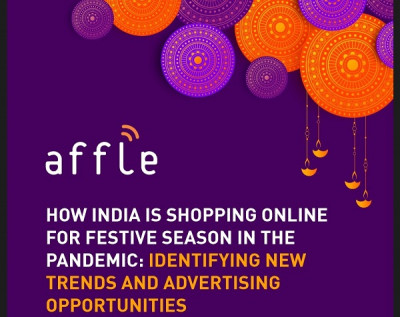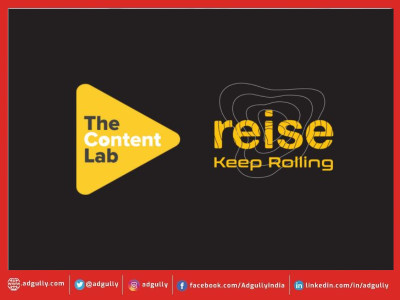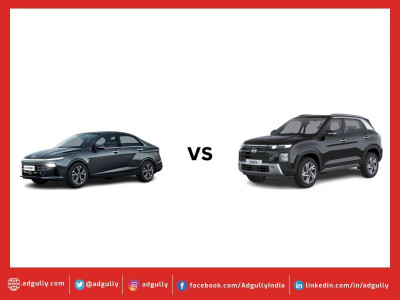How India is Shopping Online for Festive Season in the Pandemic
The festive period in India between October and December is a peak time for consumers to shop, with much of the retail action happening ahead of Navratri/Durga Puja and Diwali. The period is marked by heavy retail discounts in both offline and online stores to attract consumers, who shop typically for self and for gifting.
Affle’s report, titled ‘How India is Shopping Online for Festive Season in the Pandemic’, explores how the consumer behaviour is changing in the post-pandemic period and the reasons why this festive season will be different than the others. It dives into the opportunities mobile marketers have during this time and how they can adapt to the festive season shopping in the new normal.
Also read: Maharaja Whiteline kickstarts festive season with Khushiyon Ka Homemaker
Traditionally, the festive season is marked by offline shopping, where brick and mortar stores have dominated. A 2018 Visa report said that customers preferred to shop offline despite attractive online deals because of the “touch-and-feel” factor. However, the share of online purchases during the festive period has steadily increased over the last couple of years, as more customers get comfortable with adopting ecommerce. Festive shopping events such as Flipkart Big Billion Sale and Amazon Great Indian Festival have become synonymous with festive shopping. In fact, the number of festive shoppers over the last few years continues to rise, fuelled by the attractive online offers and convenience of delivery. Mapping the number of shoppers during the festive season, it is seen that while a majority of shoppers have come from Metro cities, those coming from Tier 1 and Tier 2 cities are increasingly constituting a bigger segment of the overall shoppers.
Why this festive season is different for mobile marketers
Festive shopping in India this year looks very different due to the pandemic. Since the COVID-19 pandemic started in March this year, the mobile and e-commerce industry have already experienced a change in the way users have interacted with these platforms. An extended lockdown already affected supply chain and delivery potential earlier this year, and according to a survey that Affle conducted in partnership with Apptopia, comparing user behaviour in the online shopping industry for eight months from November 2019 to June 2020, it was shown that people were only shopping for essential items during that time, with the non-essential delivery services only picking up later when the lockdown began to ease. Popular shopping app Myntra received about 4 million orders during the period of June 19-23, according to news reports.
With the majority of people still continuing to work from home and not many travelling to visit their families and friends, typical Diwali purchases are on the backburner. In general, the traditional buying of jewellery and automobiles is likely to see a slump, whereas demands for apparel, home appliances, and furniture are on the rise.
Whereas the percentage of low-medium festive spenders remains largely the same, there is expected to be a drastic fall in the percentage of high-budget spenders (above Rs 1 lakh).
High-intent consumers shifting to digital
Customer preference to use online channels like websites and apps has grown, with a majority purchasing from these channels. With a deeper penetration of mobile technology across Tier 2 and Tier 3 cities, users have also started to get more comfortable with using digital payments (ebanking, online wallets, mobile banking) to make online purchases. Along with this, the changing demographics of the young shoppers have made online shopping a preferred channel for purchases. According to Statista’s study on eCommerce sales during Diwali, the number of online shoppers during this period has doubled, from 10 million in 2016 to 20 million in 2018. Lured by attractive festive offers, the young shopper is enticed to switch to digital channels for shopping.
According to Appsflyer data, in-app shopping activity has seen a 25% rise in eCommerce app installs. A survey by research ï¬rm Kantar found that the consumer base of eCommerce shoppers has doubled to 42% of the urban active internet users in India since March. This will be a breakthrough for Indian eCommerce as ï¬rst-time online shoppers will surge, further boosting the eCommerce sector.
Key challenges & how to navigate them this festive season:
Organic growth: With the festive season shopping trends changing and more people adopting online shopping as a go-to shopping method, we can expect a splurge in online shoppers organically for all the eCommerce/online shopping brands.
High-LTV user acquisition: Apps need to choose the right set of inventory sources to get high-value users by focusing also on the LTV of each user.
Stiff competition with IPL happening in parallel: Higher bids due to IPL, hence all the fantasy gaming apps bidding aggressively leading to stiff competition for the similar inventory sources.
Right retention strategy post festive season rush: The apps need to have the right strategy post-Diwali to sustain the acquired users. Hence, the right set of use cases to run their retargeting campaigns and a right mix of retention strategies across channels is important.
Incrementality measurement: Evaluate the true impact of ad campaigns by incrementality measurement using randomised control group tests to understand the incremental value of each channel, which is just as important as ROI.

















Share
Facebook
YouTube
Tweet
Twitter
LinkedIn